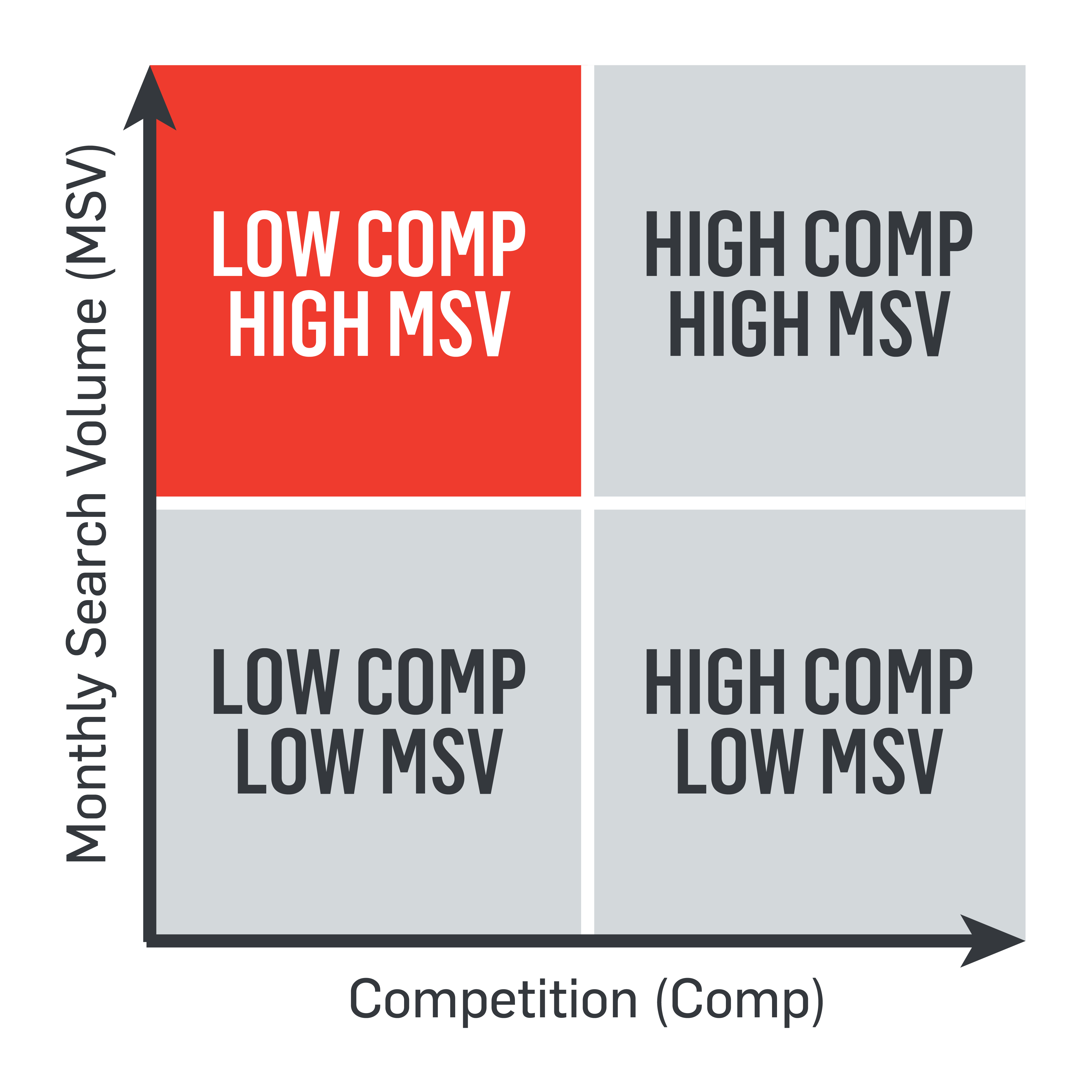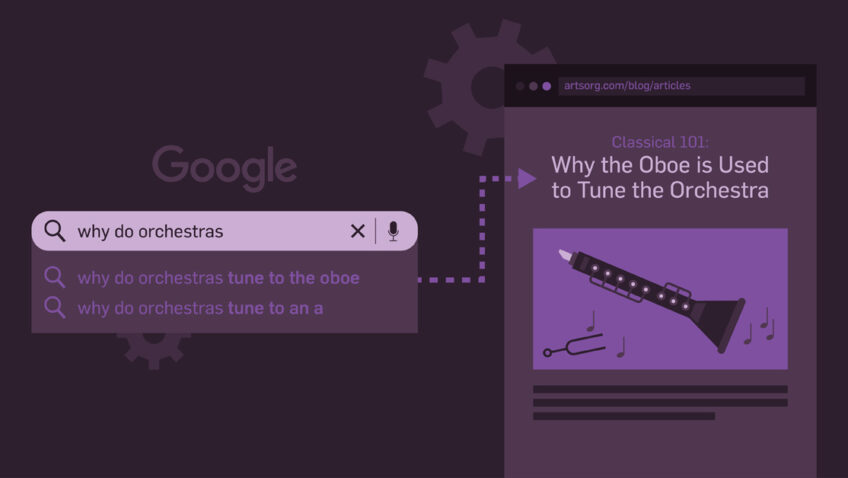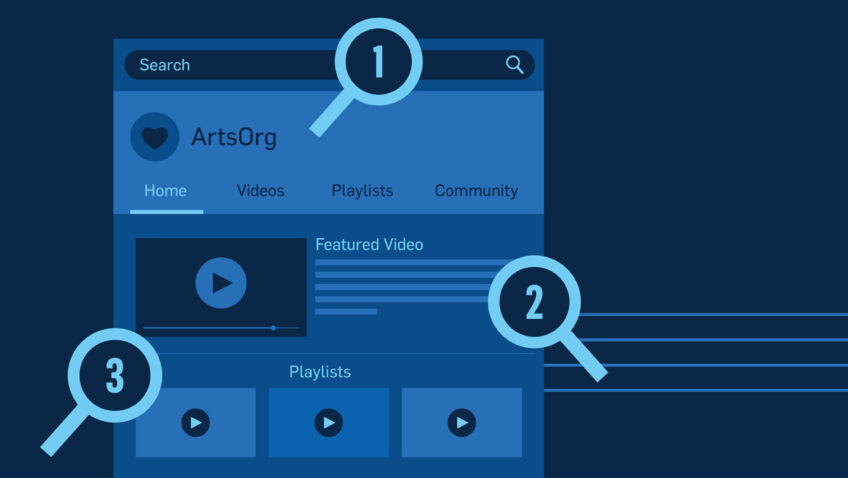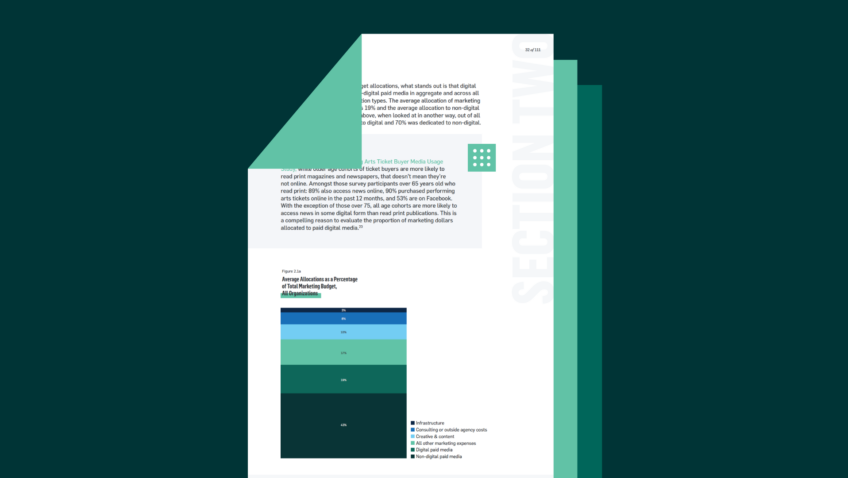SEO for Content Creators
2023 Digital Priorities
Let’s start by acknowledging that SEO content creation might seem like an endless task or writing blog article after blog article. What if we told you that in 2023 and beyond, SEO doesn’t have to be hard if you approach it in the right way?
It’s time to take SEO from meaning “Seemingly Exhausting Operations” and turn it into Super Easy Optimizations that you can put into action right away.
Classic Path vs. Search-First Perspective
Topics like season announcements, features about your new artistic director, and fundraising news are great topics for blog content—but unfortunately, most users are not searching for those topics. Instead, start thinking about your blog content from a search-first perspective.
What is a search-first perspective? Think of a user who might not be familiar with your organization searching for a general, non-branded query on Google. On the search engine results page (SERP), they see a listing for your organization’s blog article, which answers their query. The user clicks on your article to learn more and is introduced to your organization. This is a “search-first perspective.” For this concept to work, you must create content that answers relevant queries.

The long-term benefit of investing time in creating this kind of content is that every article you create is a permanent addition to your site. We’ve seen pages created years ago generating thousands of clicks per month for some of our clients. The more SEO content you have on your site, the more opportunities you will have to rank for various things people are searching for.
Step 1: Keyword Research
Keyword research is discovering which keywords and phrases users enter into the search bar so you can create content to answer those queries. This is a jargony way of saying we need to develop ideas for blog articles and ensure that they have search traffic associated with them.
There are three main sections of the keyword research process:
Inspiration: Brainstorming keyword ideas
Research: Gathering data associated with those keywords
Selection: Choosing keywords to focus our blog article
Inspiration
First, it’s important to have brainstorming and inspiration lead the way.
Brainstorm and Make a List: Gather a cross-departmental group of stakeholders and get them talking. As the brainstorming juices are flowing, create a list of everything that users might be searching for with your organization, location, and genre. At this point, there are no bad ideas— if you are unsure about a query, include it in your list.
Create Avatars: Avatars are fictional profiles you can create for your varied audience members. Exploring topics each avatar might search for is an effective way to create a list of upper-funnel blog content ideas your ideal audience members might be interested in. For example, let’s say our organization presents classical music concerts. We know many of our audience members love classical music programs, so we create an avatar called “classical music nerd.” Here’s what they might be searching for:
“mstislav rostropovich bach cello suites”
“dotzauer etudes sheet music”
“how to reset a sound post”
On the other hand, we know our classical music audience members bring friends to our programs that are not as immersed in the classical music scene. We can create a “classical music newbie” avatar who might search for things like:
“song in chef’s table”
“best creepy classical music”
“why do orchestras need conductors”
Use Google’s Autocomplete: A free and very accessible tool anyone can use for keyword inspiration is Google’s Autocomplete feature. For example, when we type “shakespeare” as our query, “shakespeare plays” and “shakespearean sonnet” might show up in the autocomplete results.
Based on these results, we could write a blog titled “10 Shakespeare Plays You Should Read Before You Die” or “5 Shakespearean Sonnets About Love to Memorize this Valentine’s Day.”
Research & Selection
To determine which keywords from our brainstorming list we should include in our blog article, we need to research the volume and competition of these keywords.
Volume tells us the number of people searching for the keyword we are trying to target.
Competition is a metric that indicates how difficult it is to appear on the search engine results page for a particular keyword.
With this information, your best action is to find the sweet spot between competition and volume.
 The best keywords to target will have lower competition and a high search volume. If the competition for a keyword is too high, it will be hard to rank on Google. If the volume is too low, nobody will search for the keyword.
The best keywords to target will have lower competition and a high search volume. If the competition for a keyword is too high, it will be hard to rank on Google. If the volume is too low, nobody will search for the keyword.
Pro Tip: The Keyword Planner in Google Ads gives us the competition and volume data to make informed choices about which keywords to select—phase 3 of the Keyword Research Process.
The Keyword research process is vital to creating valuable “search first” content, but don’t let the data behind it all keep you from starting to write content.
Step 2: Create the Article
You have done your keyword research and have a few keywords you want to target. How do you write an article or blog post around these keywords? The most important thing is to answer the query—provide enough information to address the implicit question behind a search query. One interesting way to approach content writing is by thinking about how you want the article to be framed. Do you want a more formal, informational piece of content? Or would a lighter, more casual article suit your site?
Magazine vs. Encyclopedia Content: Magazine content is shorter, more casual, and includes images. A perfect example of this is a listicle—they are easy to scroll through and read because of how segmented the content usually is.
On the other hand, Encyclopedia content is longer and more specific. It can be more like a deep dive into a particular topic. While these two types of blog content look very different, they can effectively answer non-branded, upper-funnel queries.
Use AI – Work Smarter, Not Harder: There are a bunch of AI content writers, like Jasper and Shortly, and Chat GPT, but one of my favorites is Rytr. It’s a strong AI that can help create SEO content for you quickly and easily. Remember that AI isn’t perfect, so be sure to re-read all the AI-generated content and make sure it makes sense.
Step 3: Get Technical (It’s Not Scary, We Promise!)
Make sure all title tags and image alt attributes are completed. Try to include your target keyword wherever possible (especially in the title tag), as this will signal to Google that your content is relevant to the query a user is searching for. The technical side of SEO can seem dense, but with a little thought and planning, you can easily make sure it is within Google’s guidelines.
Step 4: Publish
You are done! Congratulations, you have a search-first blog article that can go ahead and start to gain authority and traffic on Google’s Search Engine Results Page (SERP). A word of warning: it can take a while for these results to materialize, as Google is cautious about what is on the SERP. However, you can help your new content by ensuring you have the technical side squared away.
Step 5: Get Legs Out of Blog Articles
Your blog articles can and should be shared over your social media channels, too. Sharing your blog articles over your social media channels is a useful way to direct social media traffic toward your website!
Resource Alert: Use CI’s Social Content Calendar for Arts Marketers to inspire relevant and timely blog content.
Your 4-Week Search-First Blog Article Plan
Let’s review what we have covered so far in an actionable, 4-week plan to get you on your way to SEO blog content creation.
Week 1: Take time to get to know your CMS. Figure out where your blog is and how to upload new blog content. Next, schedule time to brainstorm for your blog post; if you are not the content writer, assign a person (or AI robot) to write it.
Week 2: Complete your keyword research. This is where you’ll create your search avatars, brainstorm content for your blog article with your team and select the topic you will write about.
Week 3: Write and edit your content to ensure you include your target keywords and format the post in either magazine or encyclopedia style.
Week 4: Create a proper title tag and meta description for the post and tag any images included in the post with an alt attribute. Ensure the layout makes sense and allows for easy navigation toward the purchase path. Finally, click publish!
Ready to up your SEO game? SEO is indispensable because it increases your organization’s discoverability on the search engine results page (SERP). If you do not appear on the SERP, you’re missing out on crucial organic traffic and leaving revenue on the table. CI’s SEO experts can help you!










